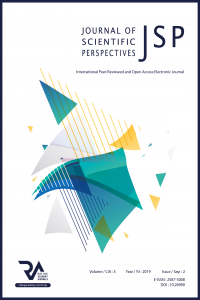Research Article
Year 2019,
Volume: 3 Issue: 2, 119 - 132, 30.04.2019
Abstract
Nowadays, the textural characteristics of foods affect the consumers'
enjoyment about them. Providing ideal textural properties, especially in multi
stage food production processes, is a complex and sensitive work that must be
carried out with high precision. Hard sugar coated chewy product, “Chewy Drage”
is highly preferred by the confectionery consumers all over the world. In this
work, the changes in the physical behaviors of “Chewy Drage” with the changes
in textural and process parameters was studied. Each process parameter was
separately optimized and the relationship between those physical properties was
elaborated.
Keywords
References
- [1] BAEK et al. (1999). Sensory perception is related to the rate of change of volatile concentration in-nose during eating of model gels. Chemical Senses, 24, 155-160.
- [2] BAINES and MORRIS (1987). Flavour/taste perception in thickened systems: The effect of guar gum above and below c*. Food Hydrocolloids, 1, 197-205.
- [3] CLARK (2002). Influence of hydrocolloids on flavour release and sensoryinstrumental correlations. In Phillips and Williams (Eds.), Gums and stabilisers for the food industry 11 (pp. 217-224). Cambridge: Royal Society of Chemistry.
- [4] FUNAMI (2011). Next target for food hydrocolloid studies: Texture design of foods using hydrocolloid technology. Food Hydrocolloids, 25, 1904-1914.
- [5] FUNAMI (2016). The formulation design of elderly special diets. Journal of Texture Studies, 47, 313-322.
- [6] KOÇ and ERTEKİN (2008). Yanit yüzey yöntemi ve gida işleme uygulamalari (Response surface methodology and food processing procedures)
- [7] MORRIS, E. R. (1993). Rheological and organoleptic properties of food hydrocolloids. In Nishinari and Doi (Eds.), Food hydrocolloids, structures, properties, and functions (pp. 201e210). New York: Plenum Press.
- [8] WEEL et al. (2002). Flavor release and perception of flavored whey protein gels: Perception is determined by texture rather than by release. Journal of Agricultural and Food Chemistry, 50, 5149-5155.
- [9] http://forum.gidagundemi.com/gidalarin-teksturel-ozellikleri-t27124.html
Year 2019,
Volume: 3 Issue: 2, 119 - 132, 30.04.2019
Abstract
References
- [1] BAEK et al. (1999). Sensory perception is related to the rate of change of volatile concentration in-nose during eating of model gels. Chemical Senses, 24, 155-160.
- [2] BAINES and MORRIS (1987). Flavour/taste perception in thickened systems: The effect of guar gum above and below c*. Food Hydrocolloids, 1, 197-205.
- [3] CLARK (2002). Influence of hydrocolloids on flavour release and sensoryinstrumental correlations. In Phillips and Williams (Eds.), Gums and stabilisers for the food industry 11 (pp. 217-224). Cambridge: Royal Society of Chemistry.
- [4] FUNAMI (2011). Next target for food hydrocolloid studies: Texture design of foods using hydrocolloid technology. Food Hydrocolloids, 25, 1904-1914.
- [5] FUNAMI (2016). The formulation design of elderly special diets. Journal of Texture Studies, 47, 313-322.
- [6] KOÇ and ERTEKİN (2008). Yanit yüzey yöntemi ve gida işleme uygulamalari (Response surface methodology and food processing procedures)
- [7] MORRIS, E. R. (1993). Rheological and organoleptic properties of food hydrocolloids. In Nishinari and Doi (Eds.), Food hydrocolloids, structures, properties, and functions (pp. 201e210). New York: Plenum Press.
- [8] WEEL et al. (2002). Flavor release and perception of flavored whey protein gels: Perception is determined by texture rather than by release. Journal of Agricultural and Food Chemistry, 50, 5149-5155.
- [9] http://forum.gidagundemi.com/gidalarin-teksturel-ozellikleri-t27124.html
There are 9 citations in total.
Details
| Primary Language | English |
|---|---|
| Journal Section | Basic Sciences and Engineering |
| Authors | |
| Publication Date | April 30, 2019 |
| Published in Issue | Year 2019 Volume: 3 Issue: 2 |


